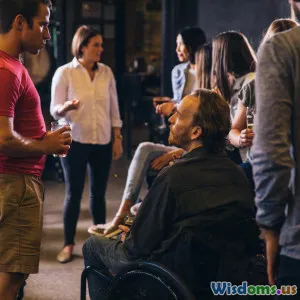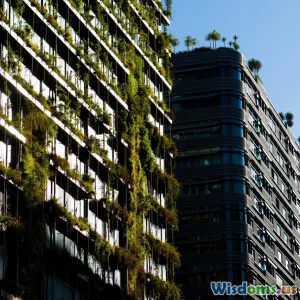
Designing Inclusive Urban Environments
6 min read Explore how to create urban spaces that cater to everyone, enhancing accessibility, community, and diversity. (0 Reviews)
Designing Inclusive Urban Environments
As cities continue to grow and evolve, the need for inclusive urban environments has never been more critical. Designing cities that are accessible and welcoming to all individuals—regardless of age, ability, or background—requires thoughtful planning and innovative solutions. This article delves into the principles of inclusive urban design, highlights successful examples, and offers practical approaches for creating spaces that promote equity and community engagement.
Understanding Inclusive Urban Design
Inclusive urban design is the practice of creating public spaces that consider the diverse needs of all users. It goes beyond mere compliance with accessibility standards; it emphasizes the importance of designing environments that enable full participation and interaction among community members. An inclusive approach involves understanding the social, cultural, and economic factors that influence how people experience urban spaces.
Key Principles of Inclusive Design
- Equity: Ensure that all community members have equal access to resources and opportunities.
- Diversity: Recognize and celebrate the unique contributions of various groups within the community.
- Participation: Involve community members in the design process to gather insights and foster ownership.
- Flexibility: Create adaptable spaces that can be used by different populations for multiple purposes.
- Safety: Design environments that prioritize safety and comfort for all users, especially vulnerable populations.
The Importance of Inclusivity in Urban Design
The benefits of inclusive urban design are multifaceted. Inclusive spaces can:
- Foster Community Cohesion: By creating environments where people from diverse backgrounds can interact, urban design can strengthen community bonds and promote social integration.
- Enhance Economic Opportunities: Inclusive design can stimulate local economies by attracting a wider audience to public spaces and businesses, which ultimately benefits everyone.
- Improve Quality of Life: Accessible and welcoming urban environments contribute to the overall well-being of residents by promoting social interactions, physical activity, and mental health.
Successful Examples of Inclusive Urban Design
Several cities around the world have embraced inclusive design principles, leading to innovative solutions that enhance accessibility and community engagement:
- Copenhagen, Denmark: The city has implemented a comprehensive cycling infrastructure that accommodates cyclists of all ages and abilities. The integration of bike lanes into public transit systems promotes inclusivity by encouraging alternative modes of transportation.
- Barcelona, Spain: The “Superblocks” initiative aims to reduce traffic in residential areas, creating pedestrian-friendly spaces that foster community interaction. This approach has led to increased public gatherings, green spaces, and local business support.
- New York City, USA: The NYC Department of Transportation has introduced various programs, such as the “Open Streets” initiative, which temporarily closes streets to vehicles and opens them for pedestrians and outdoor dining, effectively promoting inclusivity and community engagement.
Practical Approaches to Designing Inclusive Urban Spaces
Creating inclusive urban environments requires intentional strategies and collaboration among various stakeholders. Here are some actionable approaches:
1. Community Engagement
Involve community members in the design process through workshops, surveys, and participatory planning sessions. This engagement ensures that the needs and desires of diverse populations are addressed.
2. Universal Design Principles
Incorporate universal design principles that accommodate individuals of all abilities. This includes features such as curb cuts, tactile paving, and clear signage to assist those with mobility challenges and visual impairments.
3. Multi-Use Spaces
Design flexible public spaces that can serve multiple purposes, such as parks that host community events, markets, and recreational activities. This adaptability encourages broader use and fosters a sense of belonging.
4. Safe and Well-Lit Areas
Ensure that public spaces are well-lit and designed with safety in mind. This includes adequate sightlines, visibility, and the consideration of natural surveillance to make users feel secure.
5. Accessibility Audits
Conduct regular accessibility audits of existing spaces to identify areas for improvement. Engage local advocacy groups to provide insights and suggestions for enhancing inclusivity.
Conclusion
Designing inclusive urban environments is not just a matter of compliance; it is a commitment to fostering equity, diversity, and community engagement. By understanding the principles of inclusive design and implementing practical strategies, urban planners and designers can create spaces that welcome everyone. As cities continue to grow, prioritizing inclusivity will ensure that urban environments are vibrant, accessible, and enriching for all residents.
Through collaboration, innovation, and a focus on community needs, we can transform our cities into inclusive spaces where everyone has the opportunity to thrive.
Rate the Post
User Reviews
Popular Posts





















